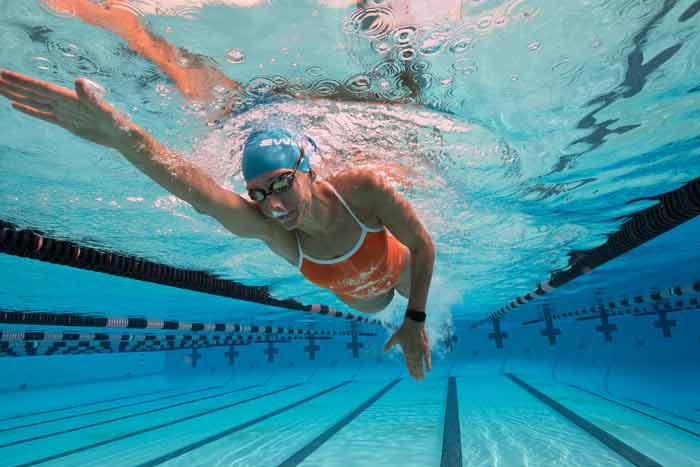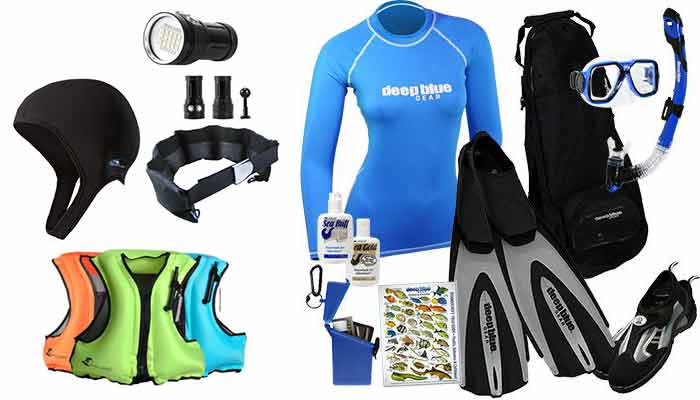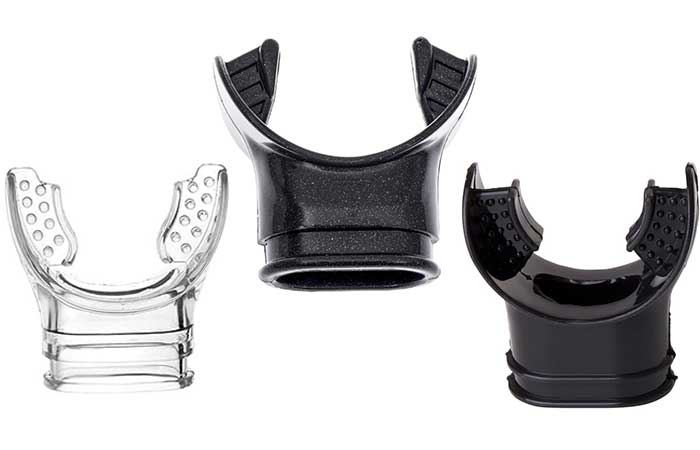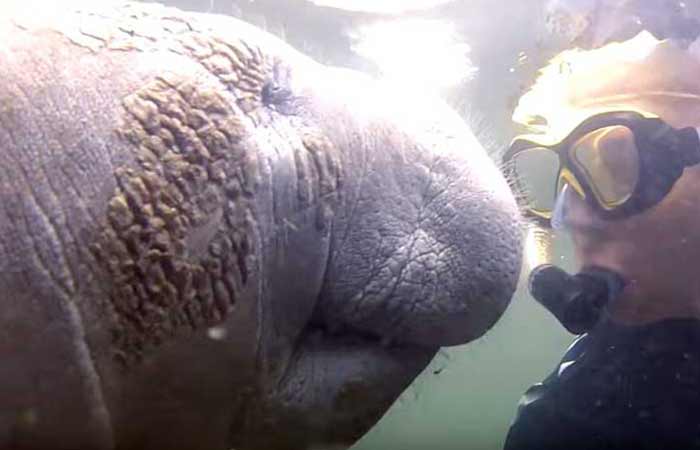Do You Need to Know How to Swim to Snorkel?
Are you aching to try snorkeling but are worried that your swimming skills will let you down? You’ll be glad to hear that you do not need to be a strong swimmer to snorkel. When it comes to snorkeling, all you really want to do is float and observe. In salt water, most people are naturally buoyant, so it’s actually really easy.
That being said, there are certainly many advantages to being able to swim when embarking on a snorkeling trip. There are many things that could potentially go wrong and being comfortable in the water is extremely important.
Luckily there are some easy ways for non-swimmers who want to try snorkeling to keep as safe as possible in the water. By following the tips and recommendations in this article you can be sure your first snorkeling trip will be a success.
Snorkeling Vs. Swimming: What You Need to Know
When you’re swimming, the general idea is to move through the water as quickly and efficiently as possible by using both your arms and legs, and with your head moving in and out of the water.

However, when snorkeling, you actually want to do the opposite of this! Rather than power through the water, you move slowly (so as not to miss anything) while keeping your face underwater and floating on the surface.

Technique – Swimming requires you to know specific strokes such as breaststroke, butterfly, backstroke, front crawl, etc. You need to coordinate your arms and legs together in order to propel yourself through the water.
When snorkeling, you’ll be wearing fins that give your legs a lot more power. This in turn means that you can use your arms purely to balance yourself in the water and point out interesting things to your friends. Not having to know a specific stroke makes snorkeling even easier than swimming!
Further Reading: How to Snorkel Safely: Beginner, Non-Swimmer & Advanced Snorkeling Guide & Tips
Breathing – A lot of swimming strokes require you to keep your head in the water and only lift it out to breathe. However, when you’re snorkeling you don’t need to think about counting breaths and knowing when to lift your head out of the water. You simply breathe normally and continuously through the snorkel.
A lot of swimmers also suffer from water going up their noses which can be unpleasant, but wearing a snorkeling mask prevents this because it covers the nose as well as the eyes.
Flotation – Swimmers rarely use flotation methods because they are comfortable staying afloat by themselves; either by using different swimming strokes or by treading water.
When you are snorkeling it’s much more comfortable to use something to keep you buoyant so that you can relax and enjoy the sights below for hours, even for those who can swim.
Flotation devices include
- Wetsuits
- Vests/Lifesaver jackets
- Flotation belts
- Swimming noodles if the conditions are very calm.
There are also products on the market specifically for snorkeling where there is a window to rest your head and look down while floating on the surface.
Equipment –You can swim without any additional equipment. However, many people use goggles, fins, and pads to enhance overall swimming.
On the other hand, snorkelers wear modern full-face masks or traditional masks with a snorkel, fins, and often a flotation device(vests or belts).
- The mask fits over the eyes and nose and should create a watertight seal while the snorkel attaches to the side of the mask and allows continuous breathing while your face is underwater.
- Finally, fins give you extra power to move through the water so that your legs don’t have to work so hard kicking.
What if you’re Non-Swimmer
As with any water-based activity, there are risks involved, and these risks are higher for non-swimmers. Following are some issues that could occur and the advantages that swimmers have over those who can’t swim.
Panicking: Non-swimmers are much more likely to panic in the water than those who can swim comfortably, especially when in deep water.
Changing Conditions: The sea and weather are unpredictable, especially in tropical climates. In just minutes the water can change from calm to choppy if the wind picks up or it begins to rain. Those able to swim are much more adept at coping with changing conditions.
Equipment Problems: When snorkeling it’s common for a little water to seep into your mask or snorkel, and occasionally you might find your fin strap becomes loose. Being able to tread water while fixing these problems is much easier if you are a comfortable swimmer.
Ocean Currents: It’s surprising how far you can end up drifting, even when the sea looks very calm. Being able to swim means that you can correct your course and swim back to the shore or boat easily whereas non-swimmers might find themselves stranded.
Boat Trouble: With a similar outcome to the above, you could find yourself drifting or floating for a while in the water before being picked up.
Safety Rules and Tips for Non-Swimmer Snorkelers
Most of the risks above can be minimized by following a few simple rules which are especially important for non-swimmers to consider:
Take a basic snorkeling
Never snorkel alone: Having a swimming buddy or guide by your side will mean that you have help close by in case you panic, or experience any of the other problems listed above.
Wear a good flotation device: This will keep you buoyant and safe, even if the water gets choppy or you drift away from the group.
Check your Equipment: Take time to make sure your equipment fits correctly and is comfortable. This will mean it’s less likely for water to get in or for you to lose a fin while kicking. Again, having someone else close by will mean they can help, for instance, to put a fin back on if it falls off.
Practice in a Pool: Spending some time getting used to your equipment and the feeling of snorkeling in a controlled environment will give you much more confidence in open water.
Stay Calm: Thrashing around in the water is sure to make any situation worse. Slow down your breathing and rely on your buoyancy device while indicating to someone nearby that you need help.
Stay Aware: By regularly looking up from the water and checking your location and proximity to others you can avoid becoming separated from the group or drifting far away.
Take a Tour: Having a qualified guide to teach you about the equipment, the snorkeling site, and answer any questions you have will take away many potential issues. They will also respond quickly and resolve any problems that arise.
Choose the right equipment: Dangers resulting from some equipment, especially full face snorkel have been increasing in the recent. Make sure the mask fits well and its of good quality.
Final Thought…
Snorkeling is a wonderful activity that people of all ages can enjoy and if you already know how to swim, you’re at a great advantage.
You’ll have the confidence to swim to different areas of the reef and even dive down to get closer to the fish and corals you want to get a better look at.
However, that’s not to say that those who can’t swim should lose out on all the fun. Anyone can snorkel.
More about Snorkeling
- Full-face Snorkel Masks vs Traditional/Regular Masks
- How Much Does it Cost to Snorkel??
- Top Snorkeling Quotes, Funny Puns & Jokes for your Captions
Best Snorkel Gear
- Best Waterproof Bags & Backpacks for Snorkeling and Other Beach Activities
- Best Snorkeling Water Shoes for Women & Men + Buying Guide
- How to Clean a Snorkel Gear: Snorkel Mouthpiece, Mask, and Fins
- Complete Snorkeling Gear Guide: Choose the Perfect Equipment for Your Next Underwater Adventure
Snorkeling Destinations






